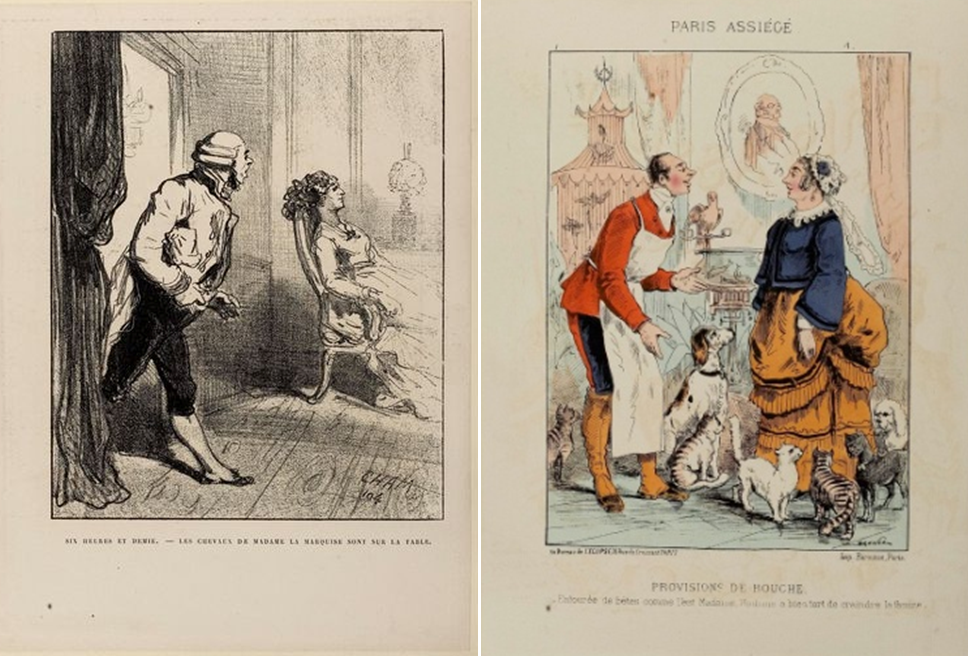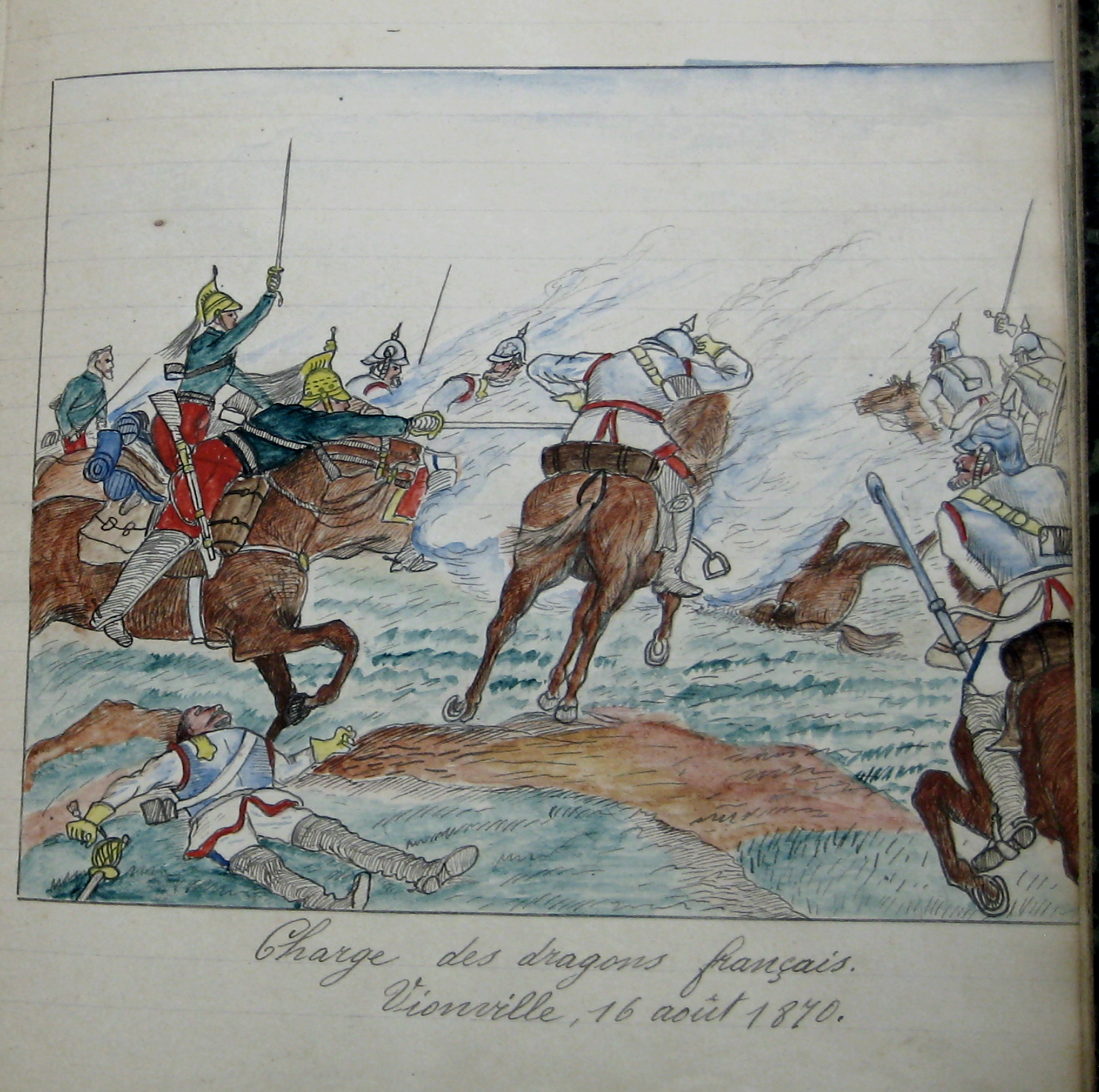In a previous blog post, we talked about series of caricatures held in Cambridge University Library and other collections (such as Heidelberg University Library) depicting food shortages during the 1870-1871 siege of Paris. The Parisian diet was considerably and disturbingly altered and extended during this time, as people resorted to eating rats, cats, dogs, and horses. The current lockdown, due to the COVID-19 outbreak, with obvious economic consequences, is predicted to increase social inequalities, despite government measures such as the furlough scheme or the extension of free school meals vouchers over the summer holidays. Did the siege of Paris level or increase social differences, and how were they perceived by contemporary caricaturists? Satirical prints specifically targeted the way privileged classes coped with the situation of penury and food shortages. The relative suffering of the wealthy, bourgeois or aristocrats, is treated humourously in many of the caricatures produced at the time. They stress the fact that, though they also experienced rationing, hardship and privations, certain categories of the population did manage to avoid starvation and, as restaurants were open, were still able to enjoy behaviours of their previous life.

In the Album du siège, Cham depicts a manservant informing his lady, reclining languidly in a chair, that her horses are ready – on the dinner table. A print of Paris assiégé shows a helpful manservant jovially reassuring his mistress, a marchioness surrounded by her domestic ménagerie (dogs, cats, fish and birds) that with such an entourage, she need not fear hunger…
Continue reading “Rich and ravenous: caricatures of the siege of Paris by the Prussians (September 1870 – January 1871)”



